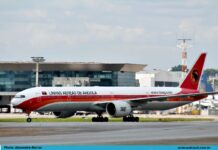Approximately 2.7 billion passengers travelled by air in 2011, up 5.1 per cent over the previous year, according to preliminary figures released today by the International Civil Aviation Organization (ICAO).
The increase in total scheduled passenger traffic, expressed in terms of passenger-kilometres performed (PKPs), reflects the overall positive economic growth worldwide, despite multiple headwinds such as
the implementation of fiscal austerity policies in key European economies. Overall traffic growth has been fuelled by both positive economic prospects worldwide, based on a 3 per cent increase in the world real Gross Domestic Product (GDP), and by a strong demand for air travel, which points to improved household balance sheets and robust business cash flows.
International traffic grew by 7.4 per cent, somewhat less than the previous year, with a strong demand in business and leisure travel, particularly in emerging markets. Domestically, in 2011, markets grew by 4.9 per cent over 2010 thanks to an estimated 10 per cent increase in demand for domestic air travel in China. Growth in domestic markets, however, was significantly lower than that registered in 2010.
The highest growth for international traffic was registered by the airlines of the Middle East followed by Europe, which benefitted from the ability of low cost carriers (LCCs) to expand their point-to-point markets. The lowest growth figures, registered in both North America and Asia/Pacific, still represent a significant increase in absolute numbers. Meanwhile, the negative economic growth in Japan continued to exert pressure on air travel in the Asia/Pacific region. On the domestic market side, the relatively lower growth rates registered in North America, Europe and Africa were offset by the robust growth rates of Latin America, Asia/Pacific and Middle East airlines.
Capacity offered by airlines, expressed in available seat-kilometres (ASKs), increased globally by 6.5 per cent, while the overall load factor remained relatively the same.






